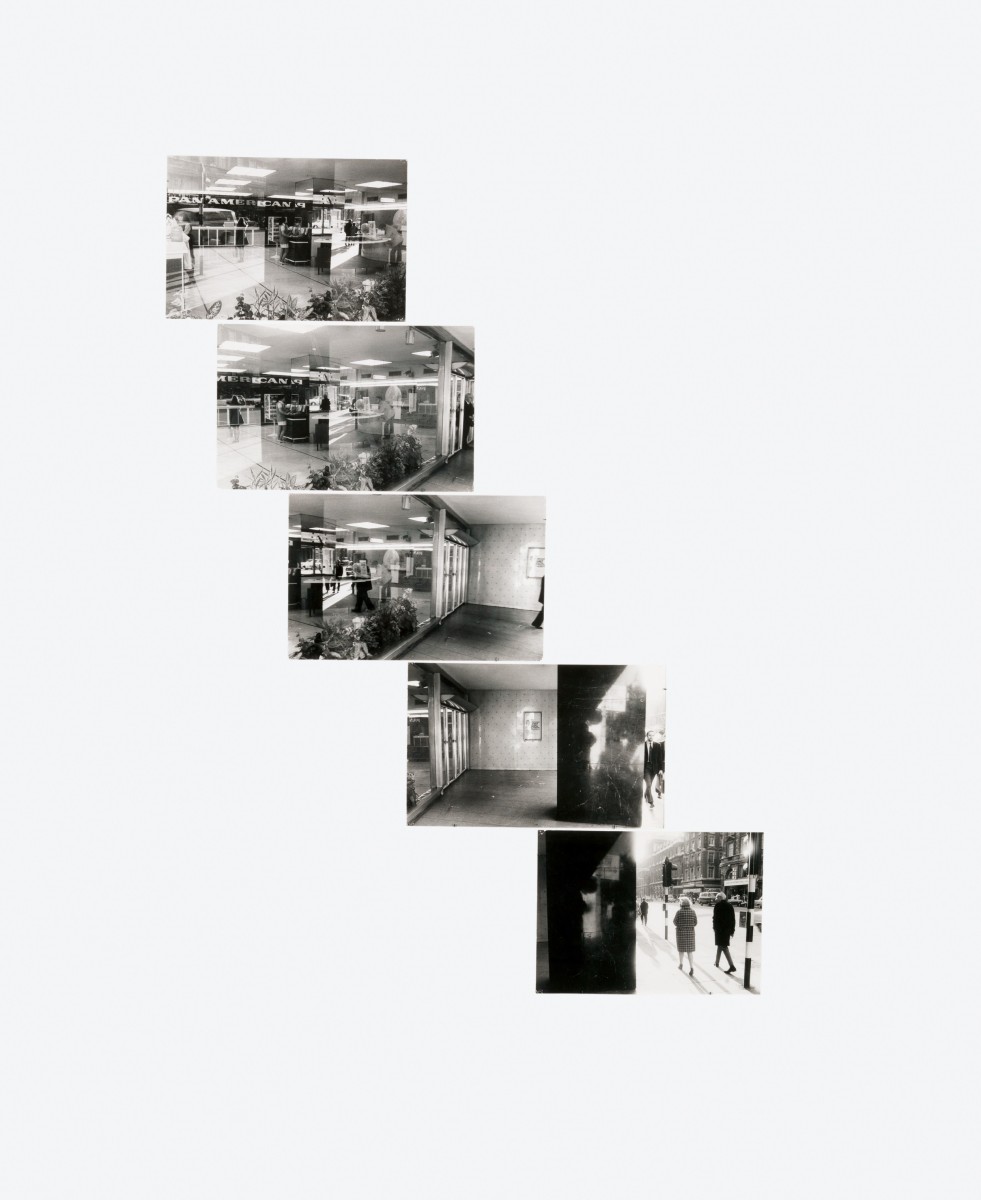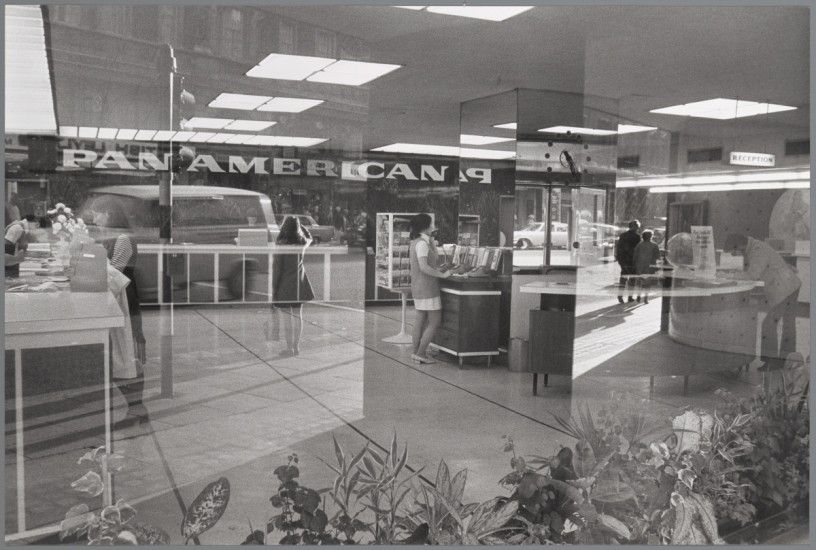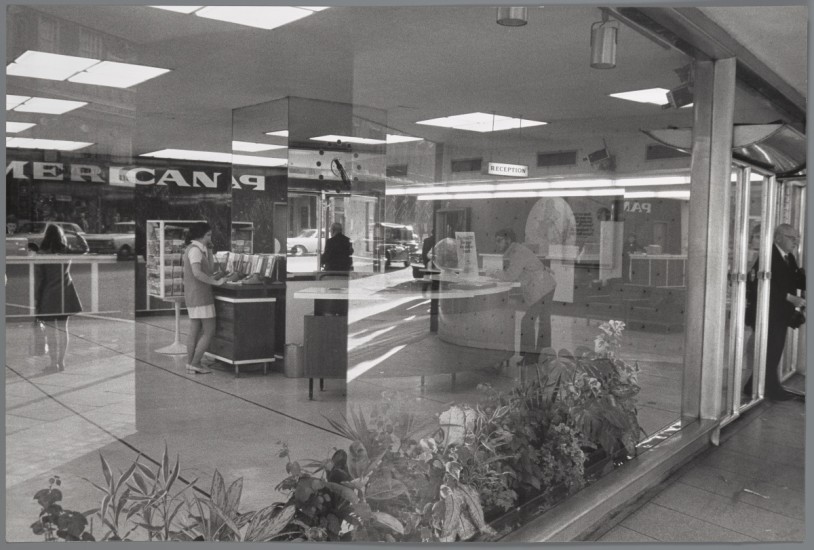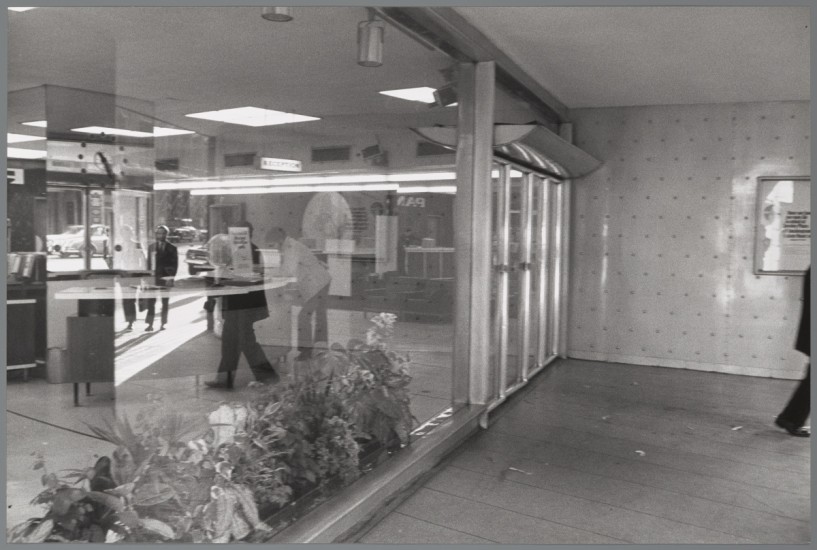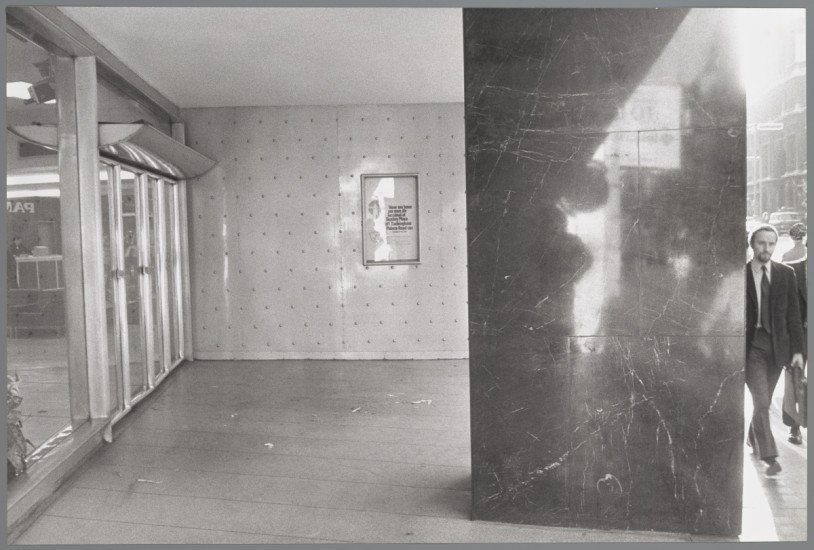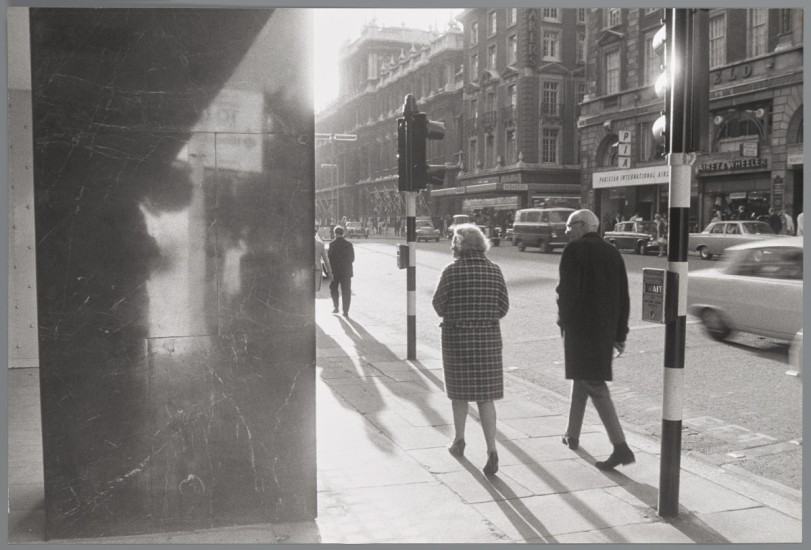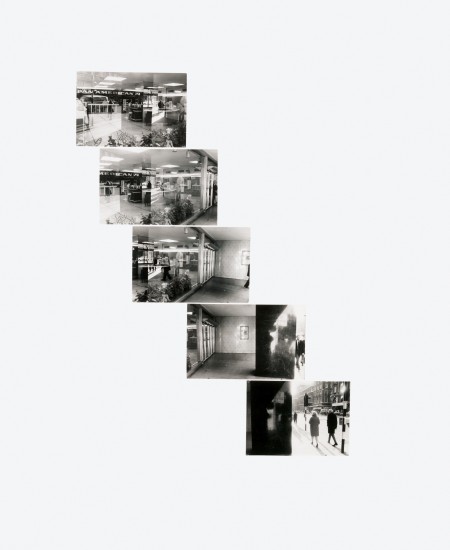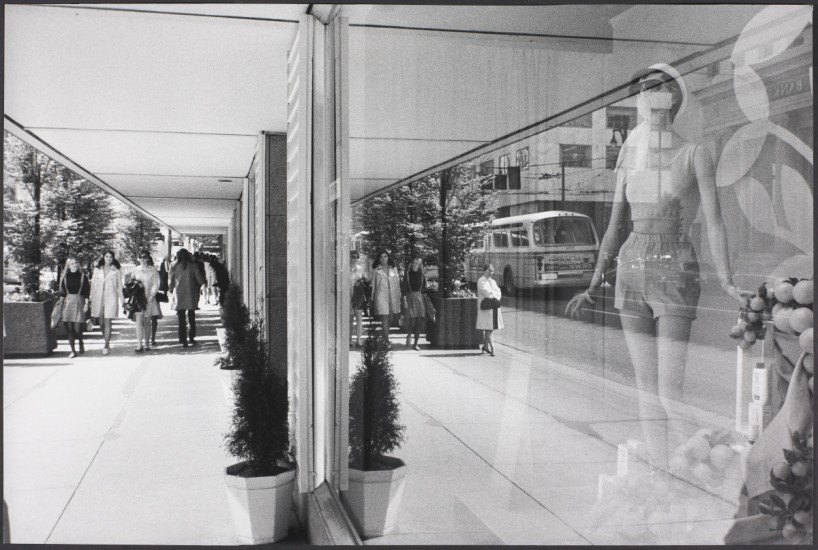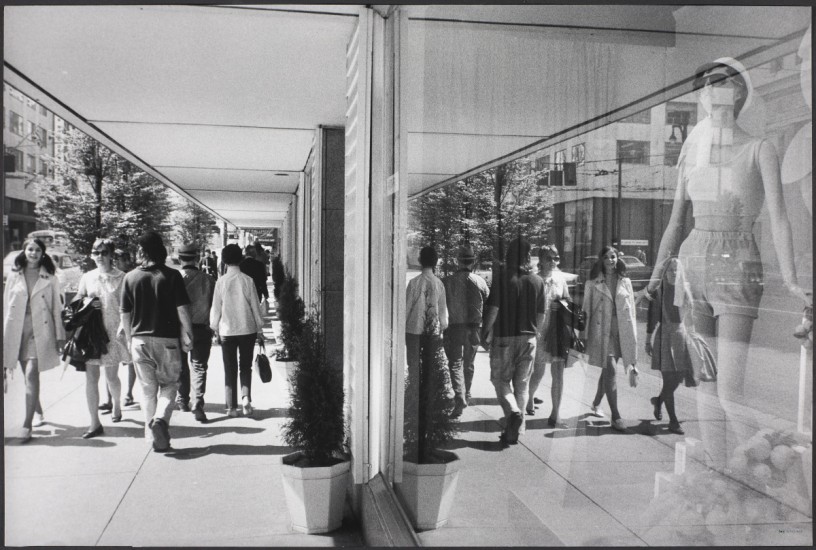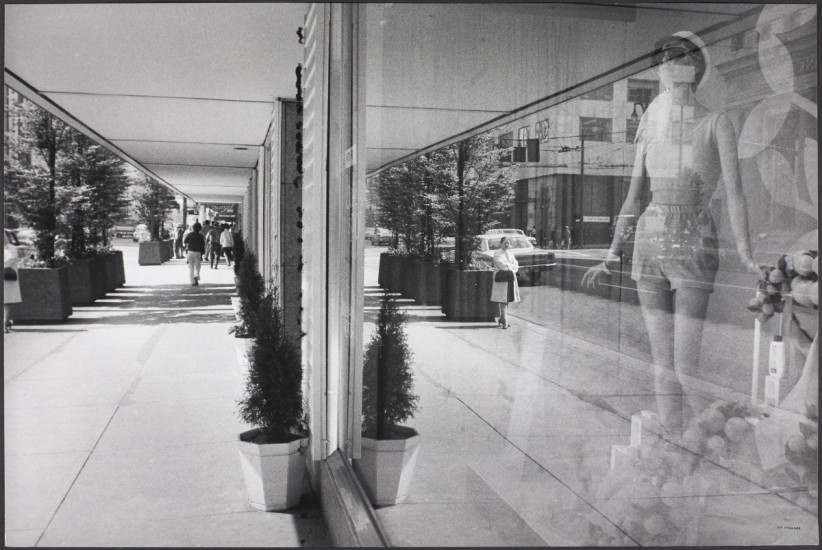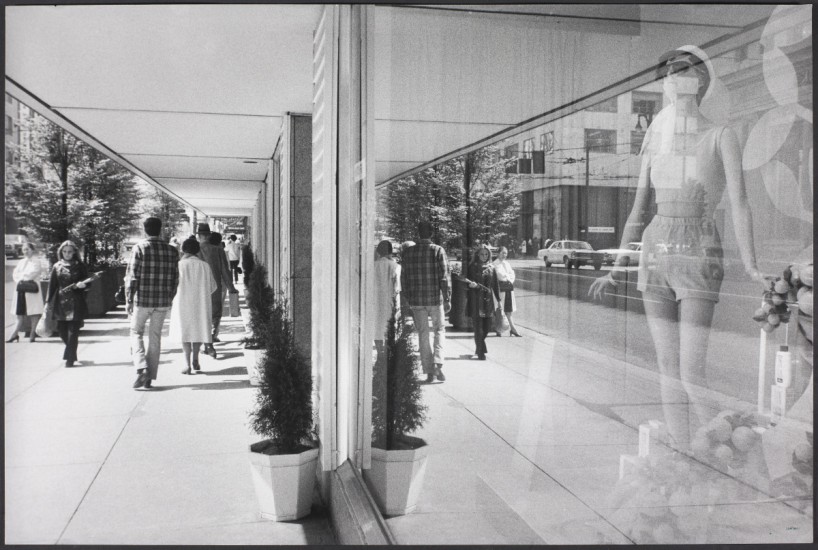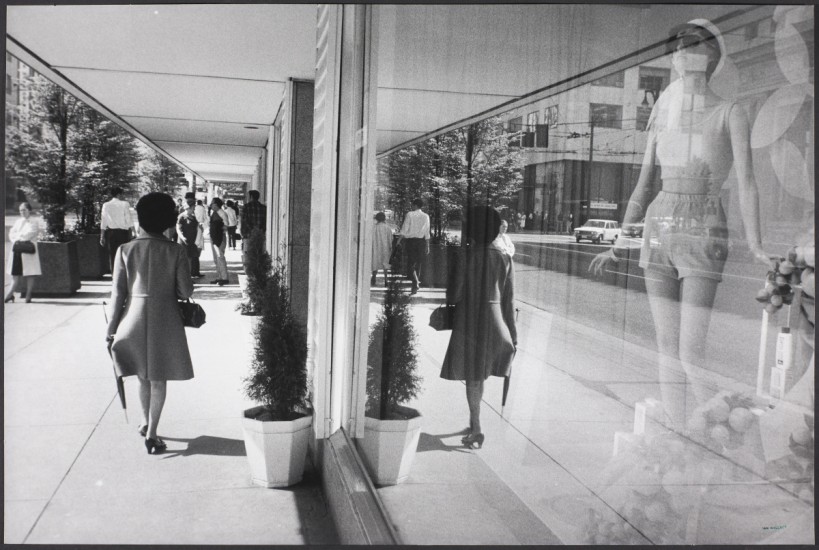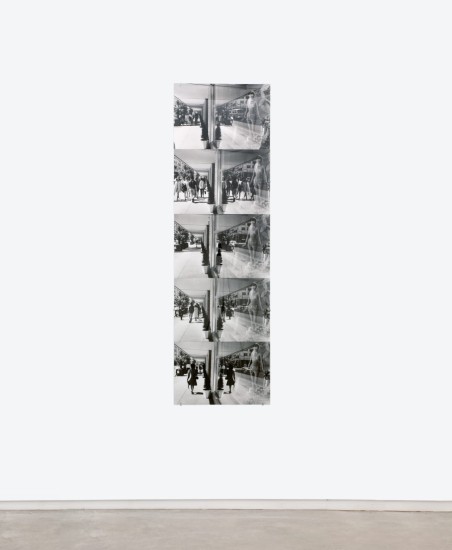At the corner of photo and concept
Canadian artist Ian Wallace, whose work is included in Documents, 1960s-1970s, discusses his fascination with urban landscapes.
What does a series of five photographs of a Pan American Airways ticket office tell us about our world? Through the unique lens of Canadian artist Ian Wallace, it can become an intersection between our concrete reality and our illusions. Included in the exhibition Documents, 1960s–1970s, Pan-Am Scan (1970) descends the gallery wall, individual black and white photographs, arranged like stepping stones. We caught up with Wallace to learn more about the making of Pan-Am Scan and to find out more about his love for cities.
AGOinsider: Pan-Am Scan's unique construction guides the viewer’s eye in a way that is both playful and compelling. Can you tell us how you built that?
Wallace: Pan-Am Scan was indeed a spontaneous moment of inspiration, but informed by a long and deep meditation on modernity. I was walking down Piccadilly Road in London with Jeff Wall in fall 1970 when I noticed the reflections of the street in the windows of the Pan American Airlines ticket office and I immediately saw the opportunity to reprise a photo similarly to my past work, Street Reflections, which I made earlier in Vancouver in the spring of 1970. So with my camera always ready, I quickly took a scan of photos from a full-frame of the windows to the street. When I edited the images for a sequence, I composed them in a shifting movement so the dark pillar of the building aligned to form a point of division between the reflections and the street. Although this work came together in a spontaneous “flash”, it was informed by my long interest in the phenomenology of the city that is both concrete, what I called “hard-surface reality”, and insubstantial or mirroric, what I called “soft-surface reality”. I valued this work for the way my intellectual researches were validated by the discoveries of an intuitive moment.
AGOinsider: Pan-Am Scan and Street Reflections, both from 1970, are two works often shown together. Do you think of them as companion pieces?
Wallace: Yes, these works are closely related and often exhibited together. Over time, these works have taken on a greater significance in understanding the development of my work as a whole. So much so that in 2009 I made a limited inkjet edition of these two works in the same format, with the intention they would be shown together as a diptych.
AGOinsider: Architecture and the street have long been a fascination of yours. What about the urban landscape continues to interest you? Do you have a favourite intersection?
Wallace: For me, the urban landscape and its architecture are a concrete metaphor for a culture of modernity in all of its aspects: phenomenological, physical, economic and aesthetic. I am a city person. It is the sea in which I swim. And as an artist, I want to create works expressing my relation to the environment around me: to enjoy it, to understand it, and to critique it. In 2010, I exhibited in The Power Plant Contemporary Art Gallery a large series of canvas works of the Financial District in Toronto. This work is to-date my most ambitious expression of my fascination with the urban landscape and its architecture. As for favourite intersections, the first one I photographed was in 1970 at the corner of Seymour and Hastings Street in Vancouver, just outside my downtown studio. This first photograph, titled Intersection 1970, I still exhibit at every opportunity. I also like the intersection of 57th and 5th Avenue in New York because some of my favourite galleries are nearby, and of course Times Square in New York because of the signage and the crowds.
AGOinsider: Descriptions of your artwork often include a sentence saying you continue to investigate the "legacies of modernism." Do you think modernism continues to exert the same influence on us now as it did in the 1960s and '70s? Or has it been replaced by something else?
Wallace: As an artist who aspires to make truly relevant art, I prefer to use photography, and photography in combination with abstract painting, so that my imagery can be grounded in the dominant pictorial art of the modern epoch, that being abstract painting. This means my photographic representations of modern life have to be seen with their contradictions, that they not be taken for granted. And yes, in my opinion, the legacies of “modernism” are still with us, keeping us critically aware of what is at stake for the present and the future.
AGOinsider: Has COVID-19 affected your studio practice or how you see Vancouver?
Wallace: The restrictions on travel and social interaction caused by the COVID pandemic have certainly affected my exhibition opportunities overseas. I spend every day in my studio using my time to refine my archive and to read and research subjects of interest. And to simply relax a bit and enjoy the fruits of my 50-plus years of creating and exhibiting my art. But I do look forward to returning to my wandering life and the excitement of the many friends and opportunities that await in the world outside my studio.
You will be able to enjoy Documents, 1960s–1970s, when the Gallery reopens. Stay tuned to AGO.ca for more updates. In case you missed it, read up on photographers Bhupendra Karia and Paul Kodjo in AGOinsider, both of whom are featured in Documents, 1960s–1970s.

